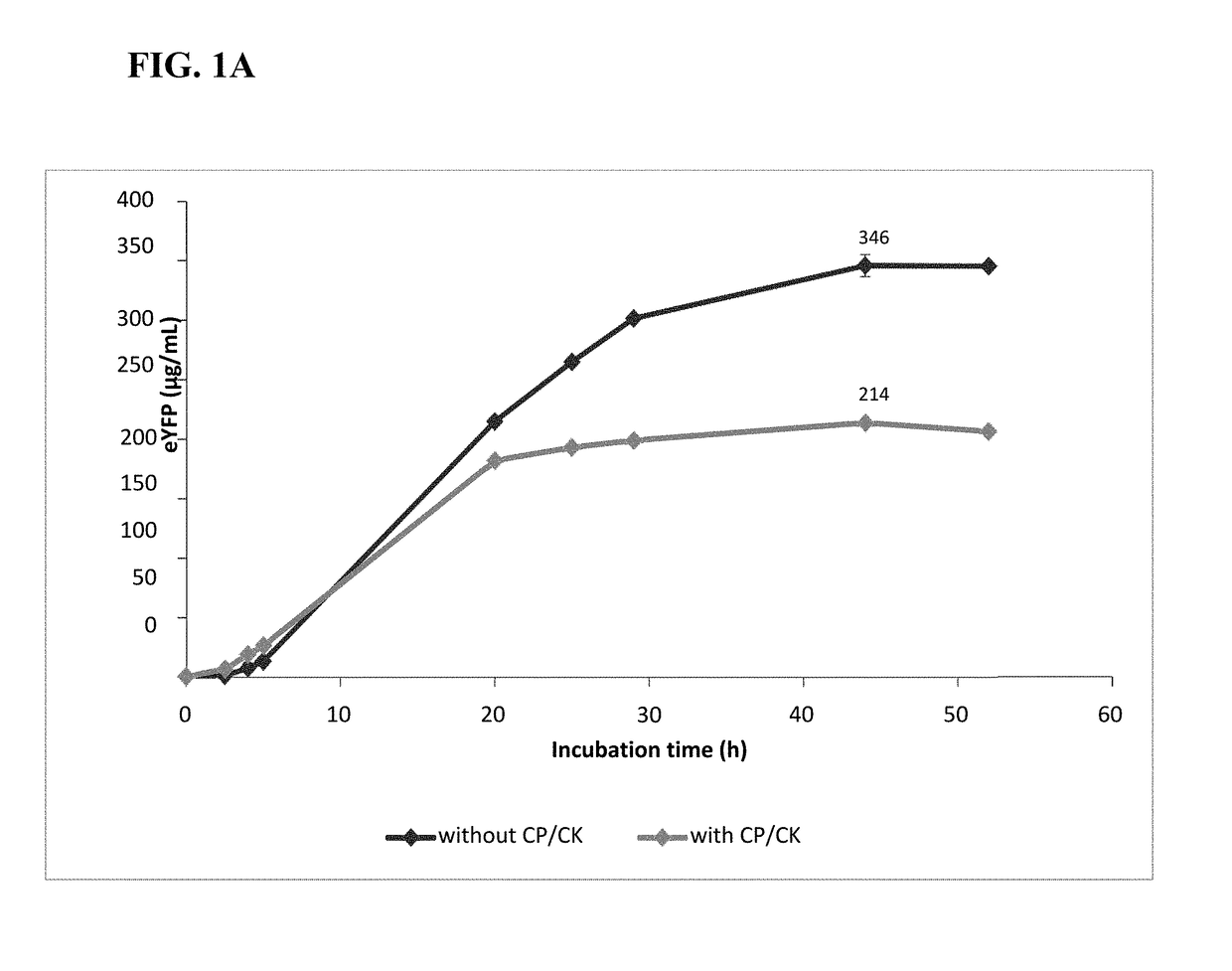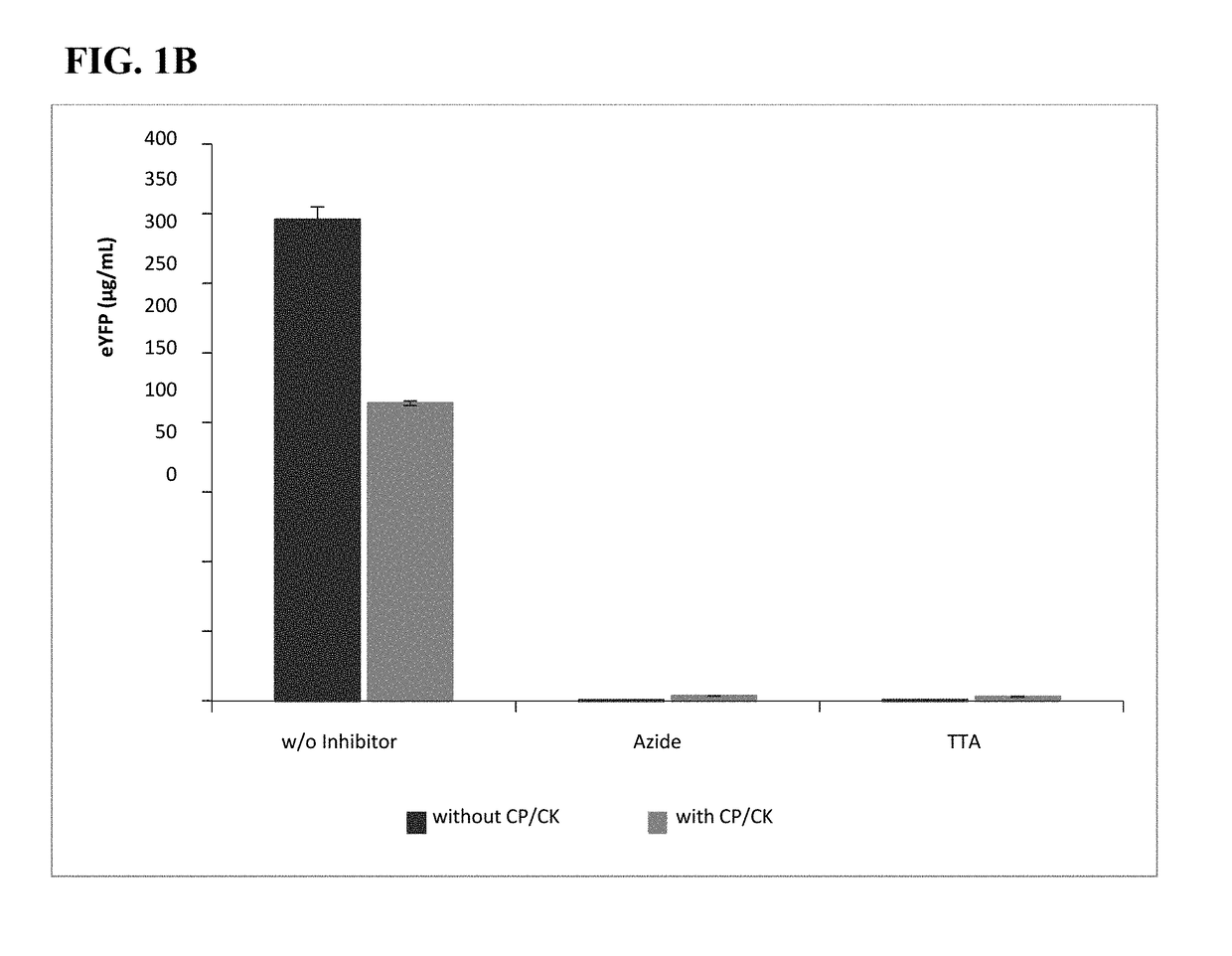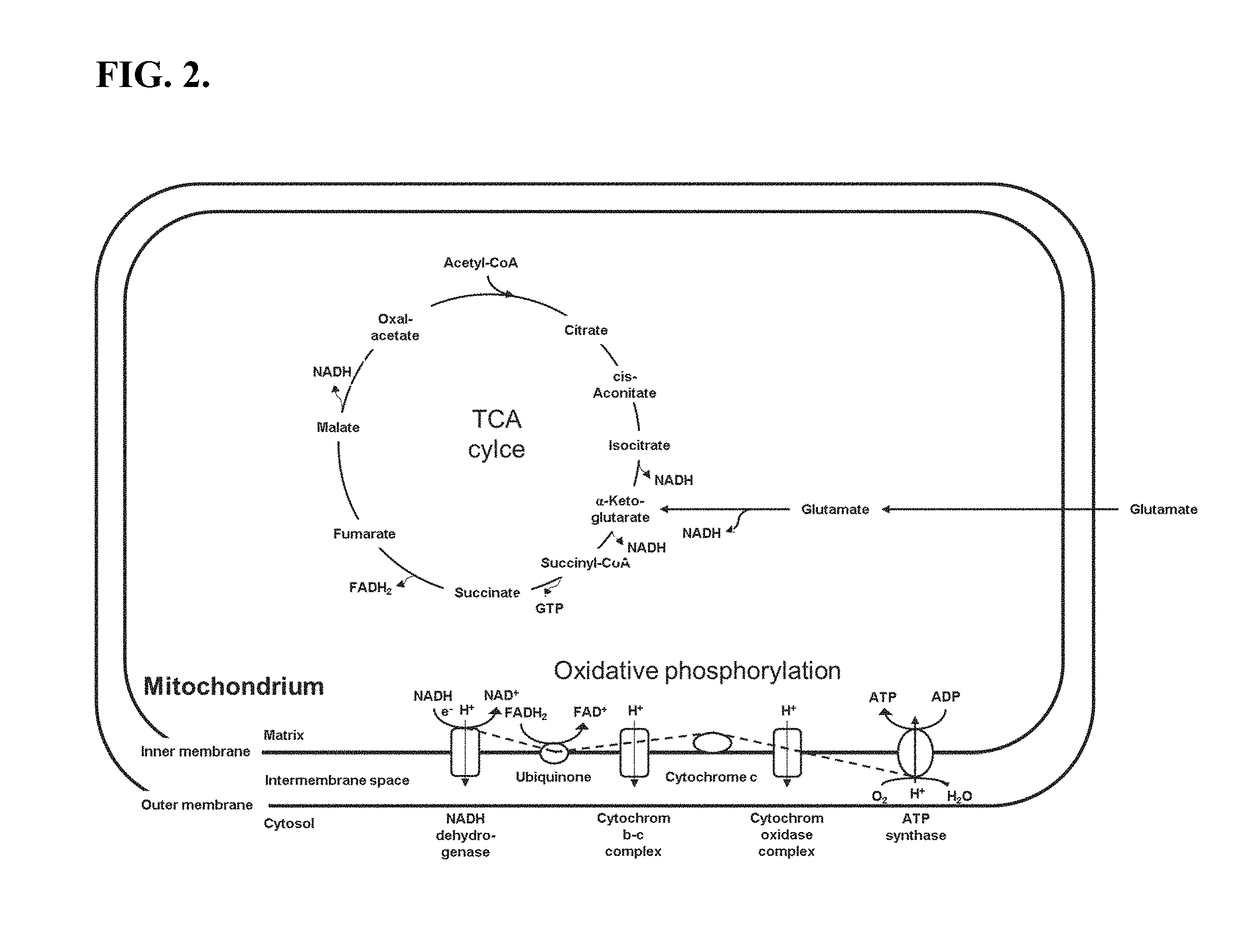Novel eukaryotic cell-free protein expression system that does not require an artificial energy regeneration system
a cell-free protein and expression system technology, applied in the field of in vitro production of biopolymers, can solve the problems of limited use of cell-free systems for in vitro protein synthesis, high cost of systems, complex extraction preparation, etc., and achieve the effects of improving the reaction system, prolonging the reaction duration, and improving the in vitro synthesis of biopolymers
- Summary
- Abstract
- Description
- Claims
- Application Information
AI Technical Summary
Benefits of technology
Problems solved by technology
Method used
Image
Examples
example 1
Materials and Methods
[0113]Plant Material
[0114]Tobacco cells (Nicotiana tabacum L. cv. Bright Yellow 2, BY-2) were cultivated in a 5-L fermenter (Type 100e, Applicon™ Biotechnology, AC Schiedam, Netherlands) or shake flask while maintaining a packed cell volume of 20-25% at 26° C. in the dark. We used Murashige-Skoog liquid medium (Murashige and Skoog basal salt mixture, Duchefa™ Biochemie, Haarlem, Netherlands) supplemented with 3% (w / v) sucrose, 1 mg / L thiamine-HCl, 0.2 mg / L 2,4 dichlorophenoxyacetic acid, 100 mg / L myo-inositol, 250 mg / L potassium dihydrogen orthophosphate, and Pluronic® L-61 antifoam (BASF™, Mount Olive, N.J., USA).
[0115]Preparation of the BY-2 Cell Lysate
[0116]BY-2 cells were harvested during the exponential growth phase of a fermentation at a constant packed cell volume of 20-25%. To prepare protoplasts, they were treated with 3% (v / v) Rohament® CL and 0.2% (v / v) Rohapect® UF (pectinase and arabanase) (AB Enzymes™, Darmstadt, Germany) directly in the fermentati...
example 2
Protein Synthesis without Artificial Energy Regeneration
[0133]To reduce the release of phosphate, the artificial regeneration system consisting of creatine phosphate (CP) and creatine kinase (CK) was omitted in the cell-free BYL system. Reactions with variable concentrations of the reaction components were devised utilizing Design Of Experiment (DoE)-based approaches (fractional designs and response surface models in Design Expert v8.0 (State-Ease™ Inc., MN, USA)), with and without CP and CK; HEPES-KOH, pH 7.8 (0-80 mM), magnesium glutamate (1-12 mM), potassium glutamate (0-40 mM), plasmid (10-100 ng / μL (4.5-43 nM)), NTPs (i.e., ATP / (GTP / CTP / UTP)) (0.5 / 0.2-4 / 1.6 mM), and T7 RNA polymerase (20-80 ng / μL), with and without CP (0-40 mM) and CK. The concentration of chloramphenicol was adopted from the system with CP / CK. From these experiments, preferred reaction component concentrations were obtained for both systems (with and without CP / CK). Table 2.
TABLE 2Preferred concentrations of r...
example 3
Modifications of Coupled Transcription-Translation Reactions without Artificial Energy Regeneration
[0138]Use of Sorbitol for BY-2 Lysate Preparation.
[0139]For the preparation of the BY-2 lysate large amounts of an osmolar substance are needed to adjust the osmolarity during protoplastation and evacuolation. Mannitol is routinely used for this purpose, and it accounts for about 10% of the total cost of lysate preparation. We tested the ability of sorbitol (around 10 times cheaper) as an osmolar substance. Parallel experiments using mannitol or sorbitol for protoplastation and evacuolation revealed that sorbitol is surprisingly not an equivalent of mannitol; it is superior with regard to both lysate yield and lysate quality as determined by the expression of eYFP (FIG. 5). Moreover, the higher solubility of sorbitol was found to facilitate buffer preparation. However, it was also found that mannitol is superior to sorbitol for the final washing of the evacuolated protoplasts, as utili...
PUM
| Property | Measurement | Unit |
|---|---|---|
| volume | aaaaa | aaaaa |
| volume | aaaaa | aaaaa |
| humidity | aaaaa | aaaaa |
Abstract
Description
Claims
Application Information
 Login to View More
Login to View More - R&D
- Intellectual Property
- Life Sciences
- Materials
- Tech Scout
- Unparalleled Data Quality
- Higher Quality Content
- 60% Fewer Hallucinations
Browse by: Latest US Patents, China's latest patents, Technical Efficacy Thesaurus, Application Domain, Technology Topic, Popular Technical Reports.
© 2025 PatSnap. All rights reserved.Legal|Privacy policy|Modern Slavery Act Transparency Statement|Sitemap|About US| Contact US: help@patsnap.com



